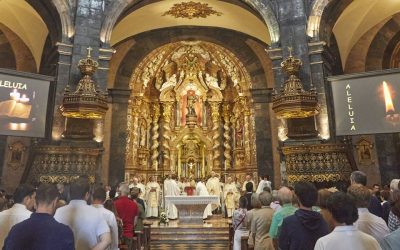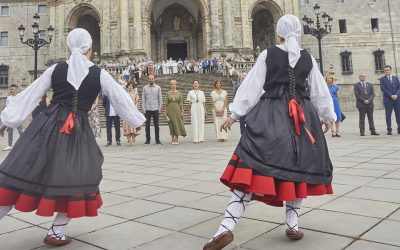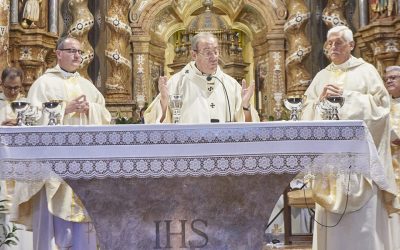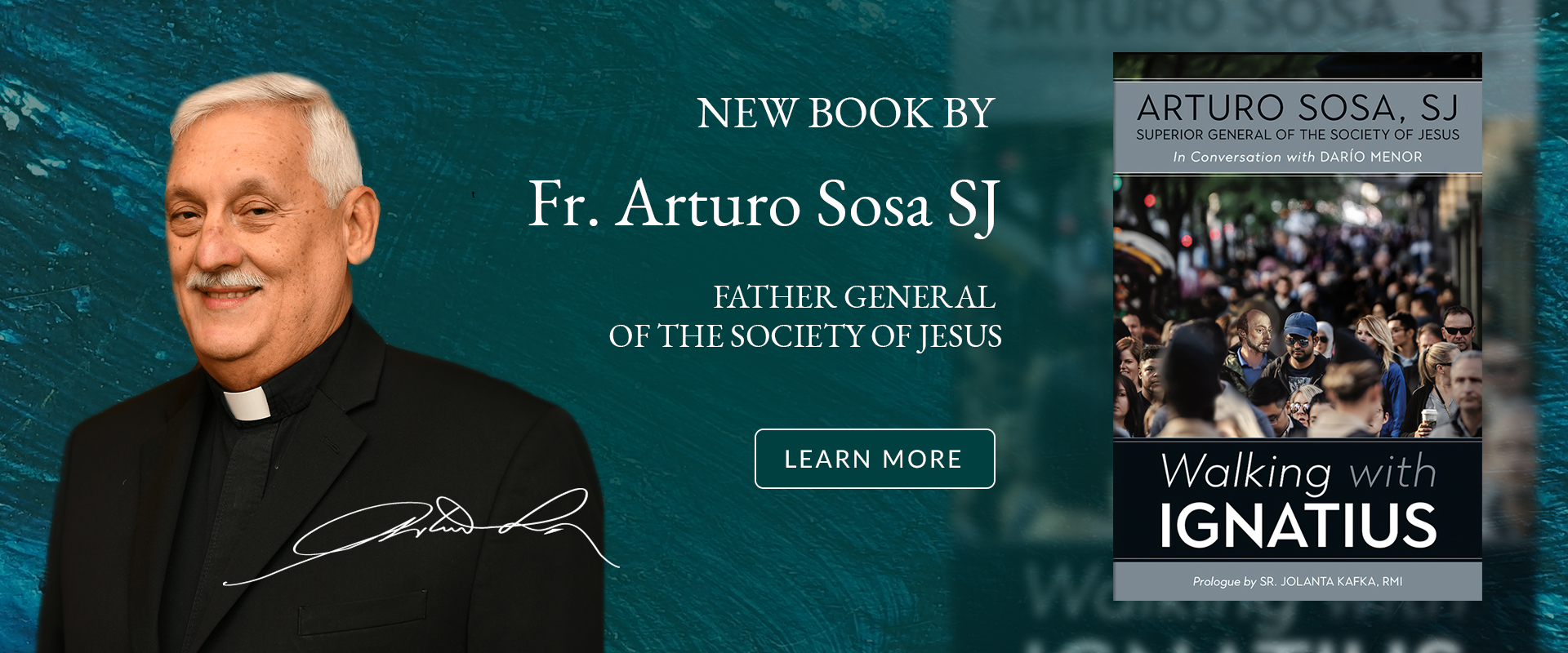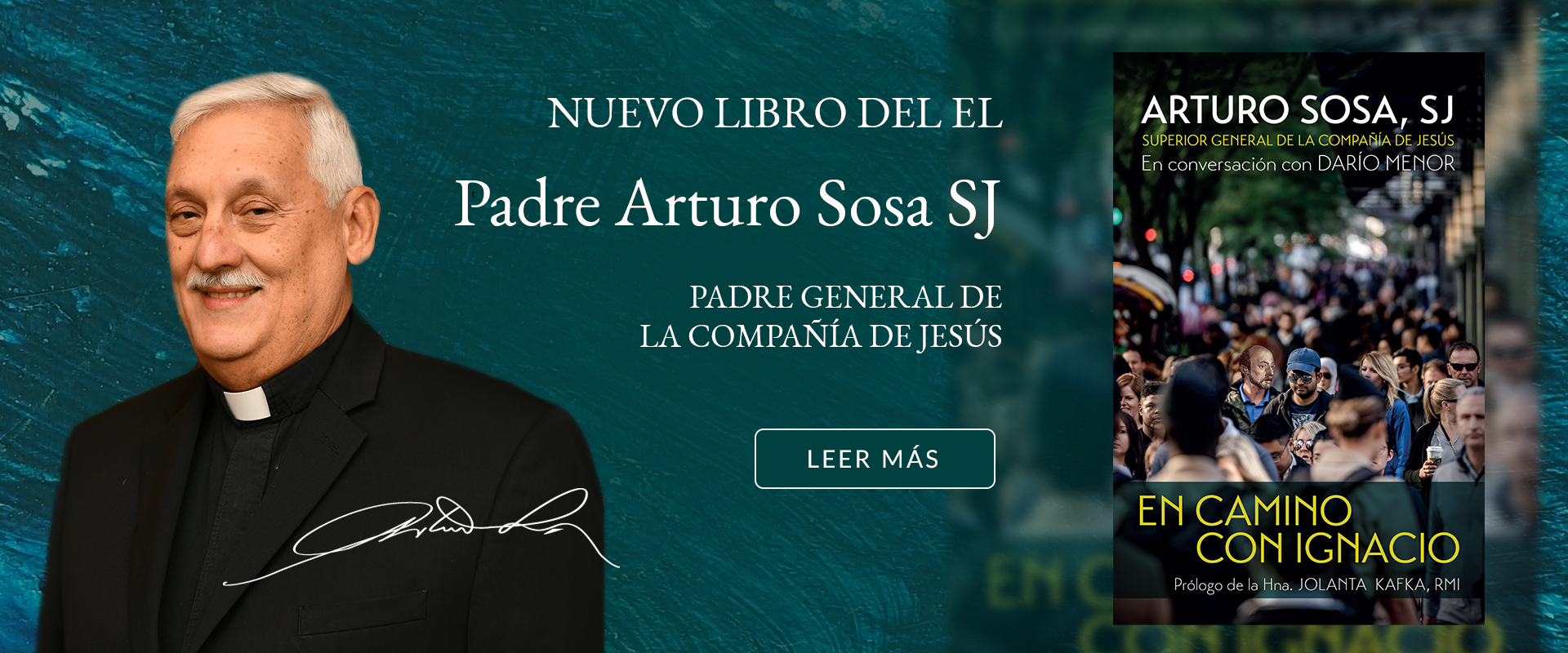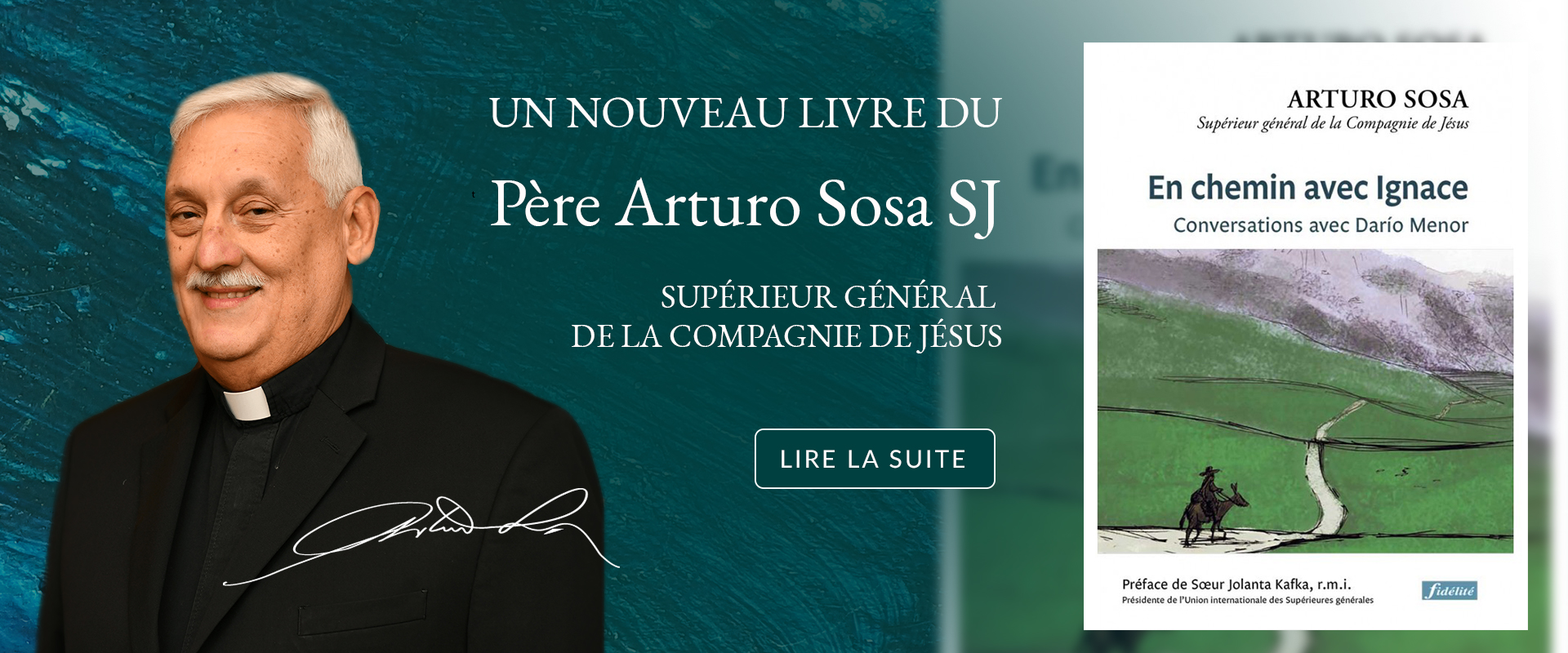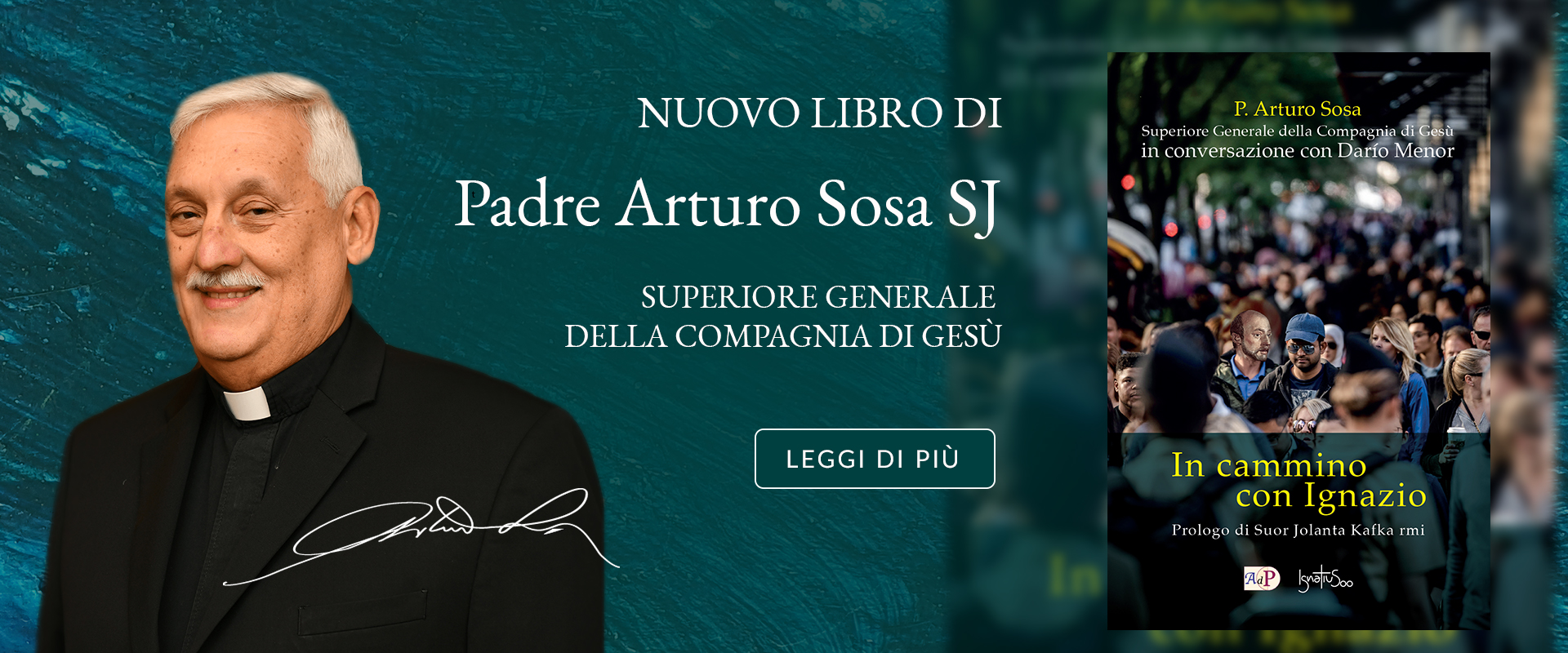The bishops of the dioceses through which the “Ignatian Way” passes, from San Sebastian to Manresa, have written a Pastoral Letter to help the faithful have a rich spiritual experience of the Fifth Centenary of the wound and subsequent conversion of St. Ignatius of Loyola. More information on the Ignatian Way: link.
As pastors of the archdioceses and dioceses through which the Ignatian Way passes, we want to lend our support to the celebration by the Society of Jesus of the Ignatian Year, which began on May 20 and will last until July 31, 2022. Its purpose is none other than to commemorate the 500th anniversary of several decisive moments in the life of St. Ignatius of Loyola: his conversion while recovering from the wound he suffered in battle and his pilgrimage and stay in Manresa.
That experience, marking a before and an after in the life of Ignatius, will always be an event that transcends the centuries and inspires us with its spiritual force. Recalling the conversion of St. Ignatius can be an opportunity for us to draw closer to the God who writes straight, even if the lines sometimes rebel and get twisted. He knows how to make everything new, even our lives.
We want to encourage you, dear communities, to participate in the best way you can in this Ignatian Year and to enjoy its fruits. Ignatius believed that his experience of faith was not something that belonged exclusively to him. That was why he wrote in his Autobiography that “he observed some things in his soul and found them useful […], and he also thought they could also be useful to others” (Au 99) in their spiritual and existential journey.
We might be tempted to think that such a story is foreign to us and far removed from our own reality. We doubt that it could interest or challenge us, modern-day believers who have witnessed a change of epochs with many profound social, ideological and spiritual transformations. This is not the case. The experience of Ignatius has no expiration date; it remains valid and belongs to everyone, for it touches the deepest, most interior parts of the person. “O flame of living love, which tenderly wounds my soul in its deepest center,” wrote St. John of the Cross, a contemporary of Ignatius. It is the experience of personal encounter with Jesus Christ, an encounter that fills us with life, his life. It is an encounter in which we contemplate our existence with Jesus’ own eyes of love and feel that we are all newborn brothers and sisters, children of the same Father.
The wound in his leg opened Ignatius’ eyes so that he could see another, even deeper wound: the wound that is produced by sin in the human heart and that can be cauterized only by the fire of the Holy Spirit.
With all this in mind, dear brothers and sisters, we present some considerations that will help us to know better the profound experience of St. Ignatius, which we today have the opportunity to make our own.
The possibility of change
The conversion of St. Ignatius of Loyola, as he himself says in his Autobiography (Au 12), was quite exceptional. Before his conversion, Íñigo de Loyola was a typical courtly figure of the early 16th century, marked by the aristocratic and military ambition of his time. Like many men and women of our own time, he wanted to be famous and recognized. It is because of great ambition that he risked his life during the siege of Pamplona by French troops, fighting valiantly until May 20, 1521, when he was felled by a cannonball.
He spent his convalescence in his family home in Loyola (Basque Country). His slow recovery was the occasion of a powerful religious experience that would mark the rest of his life. Already thirty years old, Íñigo felt moved to reject the self-centered, competitive culture that he had been imbibing until then, a culture that thought only of accumulating merits in order to climb the social ladder. He began to glimpse that God was asking him to take a new path, one far removed from worldly vanity and ephemeral glory: it was the path of discipleship to the One who is the Way, the Truth and the Life, Jesus of Nazareth. Ignatius engaged in a long, perilous and complex search, the first part of which consisted of his intense 11-month stay in Manresa in 1522-23. Before the Virgin of Aránzazu he made his vow of chastity, and before the altar of the Virgin of Montserrat he laid down his sword and his dagger, the expired credentials of his knightly past. From that moment on he was only a believer on pilgrimage toward the God who was already dwelling within him. It was at that moment that Íñigo of Loyola begins to be Saint Ignatius.
The saint began his journey of conversion thanks in part to reading. He was especially moved by one book, the Life of Christ, by Ludolph of Saxony, which by chance came into his hands during his convalescence in Loyola. At this most humanly difficult moment of his life, Ignatius for the first time discovered Christ and became fully aware of what that discovery meant. He knew that Christ would help him to discern the value and meaning of his life. His passion for Christ would help him to exchange his sword for the Word, his combativeness for an intimate fraternal love, his battle armor for the strength of faith, and the fleeting flicker of fame for the flame of ever-living love. His discovery of Christ occurred at the same time as he discovered the wound of sin in his personal history and the undeserved grace of forgiveness. The grace of Christ would inspire and strengthen him to ask himself honestly the triple question: “What I have done for Christ? What am I doing for Christ? What I must do for Christ?” (Ex 53). Ignatius understood that the past, the present and the future of our lives can find their fullness only in Christ.
Loyola and Manresa forever marked the life of Ignatius, as well as the lives of many other men and women. Through that profound experience of conversion, Ignatius learned to believe and to discern. Loyola and Manresa remain today as beacons that never lose their light; they represent the “principle and foundation” (Ex 23) of every subsequent journey.
In a way, the journey of faith is being born and reborn to God in every successive conversion. This is what we usually experience: there is not just one moment—there are many moments when we rediscover the meaning of our Christian identity and mission through the constant process of renewal that God works in us. Identity and mission never neglect but, rather, are always attentive to the concrete historical moment in which we are given to live. We must engage with our personal and social circumstances, discerning in the light of the Gospel the appropriate responses to persons, facts, circumstances, nuances, and situations.
The conversion of St. Ignatius reminds us that God wants to invite us to diverse conversions, some of them surprising and unpredictable. He has done so until now and will continue to do so. God rises up like the sun every morning to show us the life that overflows, just as his love does. How can we refuse such a love?
The possibility of our being transformed
The change of conversion is not just any transformation, however good and useful it may be. Our culture sees that humanity has been progressing in many areas and will continue to progress, so it tries to persuade us that change can come about only through human effort. We become gradually convinced that what leads to a better future depends only on us. Today’s technology, unimaginable for past generations, generates the illusion that no goal is unattainable. We come to believe that we will change the world not just partially but totally, as long as we provide ourselves with the appropriate means. We forget the first part of that old popular saying: “God helps those who help themselves.”
Deep down we think that by optimizing our external reality, we can improve things substantially. It is difficult for us to recognize that changing the world also involves changing ourselves. If we want to improve the world, we must improve ourselves along with it. Pope Francis alerts us to the temptation of the technocratic paradigm when he states: “The greatest danger lies not in things or organizations or material realities, but in the way people use them” (FT 166). Ignatius of Loyola teaches us to use our intelligence, strength and constancy to go about the world doing good, as Jesus did.
Like so many other famous figures of the Church, St. Ignatius experienced his conversion as leading him towards a personal transformation that would open him up to unforeseeable horizons. He expresses this sensation well in his Autobiography: “What new life is this that we are now beginning?” (Au 21). Recalling his time in Manresa, the saint confesses that “God was treating him in the same way that a school teacher treats a child, carefully instructing him” (Au 27). He realized that it was God, and not himself, who was truly guiding his steps forward; and that it was he, Íñigo of Loyola, and not those around him, who had to take those steps. Social change towards a more humane, fraternal and compassionate society is possible only with conversion of the heart, a conversion that God can work in each one of us if only we allow him to do so. Our commitment to the poor, the sick, the alienated, the marginalized and the most disadvantaged will be truly effective only if we let God work in us.
This process of interior conversion is not easy; it demands sacrifice; we must avoid being centered exclusively on ourselves. However, we are reluctant to leave the sphere of our own interests and comforts in order to approach others graciously. Daily life confirms that many of our conflicts are resolved as soon as we stop pretending to be the center of everything and turn to others and to the Lord. The meaning of human existence becomes clearer when we leave the orbit of our selfishness and move towards a personal encounter with the God of gratuitous grace. St. Ignatius summarizes the quality of any true spiritual process in this well-known principle: “In all spiritual matters, the more one divests oneself of self-love, self-will, and self-interests, the more progress one will make” (Ex 189).
The experience of Ignatius emphasizes what is characteristic of every Christian conversion: it is a transformation that unfolds from within, from our most interior spaces, and it affects the whole of our being in a profound and permanent way. It is only through this inner transformation in Christ that we can be salt of the earth and light for the world, a world that is hungering and thirsting for justice, fraternity, transcendence and hope. In our own time, when the “passion for immanence” seems to suffocate all sense of transcendence, we must follow in the footsteps of St. Ignatius and dedicate ourselves to making God ever more recognized and glorified in the world. Authentic humanism is sustained by God, to such an extent that without God it self-destructs.
Both the love of the Father and the complexity of our times demand that we be co-protagonists in bringing about the profound transformation that our world needs so that we all arrive at a happy and blessed ending.
The possibility of our transformation in Christ
The transformation that St. Ignatius underwent as a result of his conversion was in reality a progressive unification with and in Christ. While enumerating the gifts he received during his months in Loyola and Manresa, Ignatius states: “He saw with his inner eyes the humanity of Christ” (Au 29).
Jesus is not a slogan or an ideology or an abstract program. Jesus is a Person who offers us a relationship that can radically transform our existence and our condition. St. Ignatius accepted the interior transformation that was born of his relationship with Christ and that gradually made him more and more like the Lord. That is why he insisted that those who want to make the Spiritual Exercises should be willing to reconfigure their innermost feelings, so that their joy ends up being “joy with Christ rejoicing” and their sadness consists of “pain, tears and suffering with Christ suffering” (Ex 48). We cannot forget that Jesus took on the suffering of human beings as his own, to the point of surrendering his life so that we might have life in abundance.
When St. Ignatius had gained more spiritual experience and was not so naïve as in his first steps of conversion, he affirmed that it is Christ who invites us to escape from the traps laid in history by the “mortal enemy of our human nature” (Ex 136) and so introduces us into “true life” (Ex 139). Our God manifests himself where we do not expect him, in a “place that is lowly, beautiful and attractive” (Ex 144). That is the meeting point for those whom he summons and considers his “friends” (Ex 146).
Christ is the light that shines brightly; he is the one who sees clearly and who helps us to see people and things in their purest and most authentic reality. He looks with love, for only love can see and help us to see with transparency. He sends us forth to be, like him, light in this world that is the home of all, our home. As Laudato Si’ reminds us, “Human beings, endowed with intelligence and love, and attracted by the fullness of Christ, are called to lead all creatures back to their Creator” (LS 83). That is what Ignatius did with his life.
The motto the Society of Jesus has chosen for this Ignatian Year is “To see all things new in Christ”. This reflects what St. Ignatius said when evoking his own transformation: “All things seemed new to him” (Au 30). And they were, for Christ’s gaze recreates and renews all things. His love allows us to see love and to give love in everything and to everything that exists. Christ is our pilgrim companion throughout our life, the one whom we will constantly ask to grant us “interior knowledge” (Ex 104) of his personal mystery of life, death and resurrection.
Conclusion
God beholds us with a Father’s love; he never loses us from his sight. He walks with us through every inch of our lives; we take not a single step without him walking beside us. He never tires of waiting and hoping; he knows not impatience. He always wants us to grow, and he is confident that change for the better is possible for us at every moment of life.
Like St. Ignatius, let us allow Christ to enter our lives, to grow in us and transform us. Let us allow him to help us transform the world into that common home that the Father wants, the welcoming home where everyone has bread, shelter, and reason to hope. Such was the proclamation of Jesus when he began his preaching: “The time is fulfilled, and the kingdom of God is at hand. Be converted, and believe in the Gospel!” (Mk 1:15). But after the conversion comes the mission. As he ascends to the Father, he sends us out to share the Good News with everyone: “Go forth and preach the Gospel to every creature” (Mk 16:15).
In this Ignatian Year let us rediscover our status of pilgrims. To give special emphasis to this pilgrim aspect of St. Ignatius, we have arranged to celebrate in 2022 a JUBILEE YEAR OF COMMEMORATION all along the Ignatian Way. We want this Jubilee Year, which will last from January 1 to December 31, 2022, to be understood as a continuous experience of the Spiritual Exercises.
To have faith is to go on a pilgrimage that begins with seeing what is happening around us and what is calling out for change. The pilgrimage will bring about the inner transformation of our persons so that we can be, a little more each day, faithful reflections of Christ, filling the world we live in with hope and opening it up to the hope of eternal Life. To have faith means sharing with others what we believe, what we experience, and what we celebrate: the love of God the Father who has made us his children in Jesus, our brother. This requires that we live and grow in love every day in this great universal family.
This is perhaps why St. Ignatius had a special devotion to Our Lady of The Way, the Virgin of the Good Way. Our Lady was present at the dawn of his conversion in Loyola and Montserrat, whispering in his ear the song of the psalmist: “Commit your way to the Lord, and trust in him, for he will act” (Ps 37:5).
To her intercession we also entrust our steps as we follow her Son in this Ignatian Year.
Most Reverend Francisco Pérez González, Archbishop of Pamplona and Bishop of Tudela
Most Reverend Agustín Cortés Soriano, Bishop of Sant Feliú de Llobregat
Most Reverend Salvador Giménez Valls, Bishop of Lleida
Most Reverend Xavier Novell Gomà, Bishop of Solsona
Most Reverend Ángel Pérez Pueyo, Bishop of Barbastro-Monzón
Most Reverend Sergi Gordo Rodríguez, Auxiliary Bishop of Barcelona
Most Reverend Javier Vilanova Pellisa, Auxiliary Bishop of Barcelona
Most Reverend Juan Antonio Aznarez Cobo, Auxiliary Bishop of Pamplona y Tudela
Most Reverend Juan José Omella, Archbishop of Barcelona
Most Reverend Carlos Manuel Escribano Subías, Archbishop of Zaragoza
Most Reverend Romà Casanova Casanova, Bishop of Vic
Most Reverend José Ignacio Munilla Aguirre, Bishop of San Sebastian
Most Reverend Eusebio Hernández Sola, Bishop of the Diocese of Tarazona
Most Reverend Juan Carlos Elizalde Espinal, Bishop of Vitoria-Gasteiz
Most Reverend Antoni Vadell i Ferrer, Auxiliary Bishop of Barcelona
Don Vicente Robredo García, Administrator of the Diocese of Calahorra and the Calzada-Logroño

